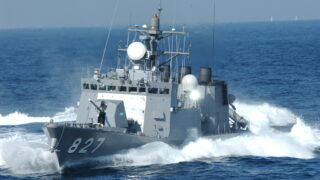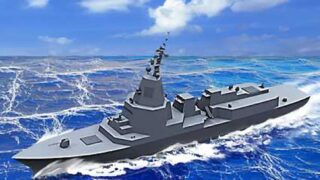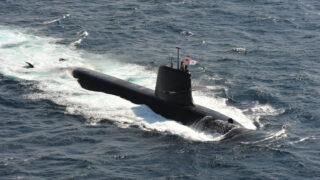Cable Laying Ship For ASW
When it comes to secrecy within the Maritime Self-Defense Force (JMSDF), submarines and Aegis destroyers are usually listed on top, but there is one specific vessel that is arguably the most confidential ship in the fleet.
This vessel is the “Muroto-Class Auxiliary Cable Repairing ship (ARC)” which is basically a cable laying ship tasked with deploying observation equipment and acoustic instruments on the seabed.
Since JMSDF is an avid submarine hunter due to the bitter experiences of WW2, it highly values cable laying ships for anti-submarine warfare (ASW) and alongside acoustic measurement ships and oceanographic survey ships, the Muroto-class is deemed as one of JMSDF’s greatest secrets, with any specific information being off-limits even to JMSDF personnel.
- General Overview
| Displacement | 4,950 tons (standard) |
| Length | 131m (430ft) |
| Beam | 19m (62.3ft) |
| Crew | 110 people |
| Speed | 16 knots (30km/h, 18.6mph) |
| Equipment | Cable Laying Device Acoustic Devices Oceanographic Devices |
| Unit Price | 300 million USD |
Commissioned in 2013, “Muroto” serves as the JMSDF’s only cable laying ship, with the main job of laying devices and sea cables that can collect and transmit information for anti-submarine warfare.
Sound waves play a crucial role instead of radio waves in anti-submarine warfare, but sound waves are heavily affected by water temperature, salinity, and depth.
Hence, continuous observation is essential for mapping the underwater environment and retaining the upper-hand in submarine warfare.
Additionally, Japan has created a network of fixed sonars in strategically vital straits to gather data on enemy submarines. Given that ships generally produce distinct sounds from their propellers and engines, like human fingerprints, capturing these “sound prints” enables the JMSDF to swiftly identify individual submarines.
The Muroto-class ARC plays a crucial role in establishing this surveillance network by installing fixed sonars and other underwater listening devices.
Because precision is required for deploying these devices, the Muroto-class is equipped with excellent maneuverability, featuring lateral movement through bow thrusters and even the ability to conduct a 360 degree rotation of its screws using azimuth thrusters.
Thanks to these special thrusters, the cable laying ship can perform “eccentric” maneuvers, distinguishing it from other JMSDF vessels.
Unexpected Encounters?
Apart from the annual cable laying exercises off the coast of Guam, the Muroto-class operates with an exceptional level of secrecy and any details regarding its activities are unknown.
One episode indicating such covertness is the unexpected encounter with a Japan Coast Guard vessel that coincidentally had a TV crew on board.
The crew from NHK (Japan’s National Broadcast Station) was aboard the Coast Guard patrol boat when they accidentally encountered the Muroto. To their surprise, the Muroto had deactivated its ship identification system and did not respond even when the Coast Guard casted a searchlight on it.
This incident was captured on footage and highlights the Muroto-class ARC’s secrecy – to the extent that even the Japan Coast Guard would mistake it for a suspicious foreign vessel.




















Comments